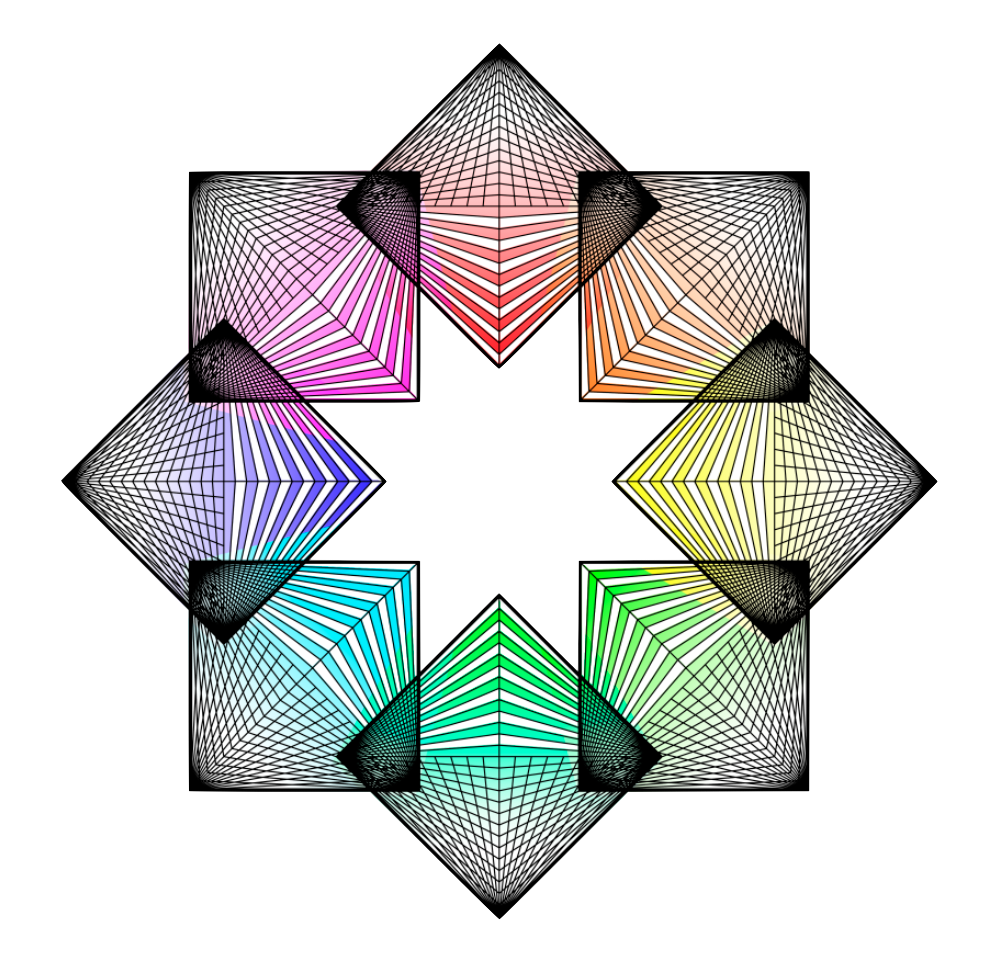Magical Creatures: QRI’s First Line of Scents
What is this line of scents about? And what is the aesthetic generator behind it?
Color is the quintessential example used to illustrate the concept of qualia. The state-space of color qualia is rather simple1. It consists of three orthogonal dimensions: the red-green axis, the yellow-blue axis, and the white-black axis. Every shade of color can be found as a coordinate in this three-dimensional space.

Albeit controversial in some circles, fundamental properties of this qualia space can be understood experientially by anyone who pays close attention. For example, orange, purple, yellow-green, and green-blue are all secondary color qualia. Orange is, in some sense, both yellow-like and red-like; it isn’t a “pure” color quale. A fair number of phenomenal puzzles can be formulated with color qualia alone. But at its core, the space is simple: linear, Euclidean, and 3-dimensional.
The state-space of scent qualia, however, isn’t that simple. Depending on who you ask, scent-space might have between 30 and 300 dimensions. It is our measured assessment, however, that seeking a Euclidean space for scents is, at best premature and, at worst, fundamentally misguided. Early research in the geometry of the state-space of scent suggests it is hyperbolic. But we at QRI would suggest it is also irregular, and its topology might be far from trivial.
Here are a couple of examples of what makes us think there may be many puzzling interactions that suggest the presence of irregularities in the state-space of olfaction:
There are many examples where two scents mixed give rise to new emergent “scent gestalts” that genuinely feel like more than the sum of their parts. As elaborated in the description of Eau de Cologne Vide, there are tactile scent effects (such as the coolness of mint and the prickly spiky trigeminal stimulation of aldehydes). Some scents modify other scents called “character impact”: two scents that refuse to “blend” with each other can be merged by adding the right character impact into the mix.
Thus, we may need new interpretative lenses to make sense of the state-space of scents. We encourage, cultivate, and celebrate creative explorations of this (and other) qualia spaces that provide new insights and perspectives. This is what Magical Creatures is all about.
Magical Creatures is a line of scents emphasizing the “special effects” found in the state-space of scents. Rather than thinking of scents as mere points in a Euclidean space, we think of them as exotic creatures inhabiting a complex and irregular space with hidden interstitial gems found in unique places like triple points and unexpected phase transitions.
As an intuition pump, perhaps think of the range of powers that Pokémon have. If you’ve only ever seen water, fire, ground, fighting, and grass Pokémon types, is it possible to derive from first principles that there is also such a thing as an electric type? What about psychic? And ghost? These seem like entirely new categories coming out of the blue rather than linear combinations out of a simple vector basis!
Likewise, the state-space of scents can, at times, seem more like an ecosystem of unique and exotic Magical Creatures than linear combinations of a few simple primitives. For example, if you were a perfume connoisseur but had never encountered minty scents of any sort, could you figure out from first principles that there ought to be such a thing as cooling scents? No way! Where did that come from?
Magical Creatures highlight some of the fascinating “special effects” that exist hidden in the state-space of scents. Think of it as a magical treasure trove of qualia secrets. Each of the scents we present has been carefully crafted to show a “special effect” in a clear and undeniable way:
- Fearless: a scent designed for countering and extinguishing fear vibrations.
- Dust Devil: a scent that showcases how scents can be mysteriously powdery.
- Glacial Gumdrop: a scent that incorporates cooling and “gummy” qualities.
- Frisson: A scent that can cause a subtle, strange, and rather remarkable synesthetic ASMR-like sensation.
- Eau de Cologne Vide: a scent that explores character impact with no flavor, a celebration of emptiness.
- Hedonium Shockwave: a scent that explores positive valence in its purest form - what would a rich scent with no negative features smell like? This is our best attempt.
Note that these are just the first six of this line of scents and that there might very well be more. We’ve come across many other rather unique effects, and in time we aim to share them.
Finally, it is worth pointing out that there are countless other ways to explore scent-space - Magical Creatures is a very generative and fun approach, but ultimately just one of many. Mapping, understanding, and utilizing the full-state space of scents is undoubtedly worthy of a lifetime of exploration. We invite you to join us in this creative pursuit and in cultivating Qualia Mastery in the olfactory domain.
See also:
- List of Aesthetics
- The Aesthetic of the Meta-Aesthetic
- A Big State-Space of Consciousness
- Daniel Ingram’s dream about Pokémon Go
We are here following the well-known findings that dates back to the psychophysics work underpinning the CIELAB color space with an Euclidean metric for color difference. Admittedly this is hiding vast amounts of complexity, such as what goes on each kind of color blindness, how power spectrum distributions map onto qualia space, tetrachromatism, blue-yellow/red-green hybrids, and hypercolors. One thing at a time!↩︎